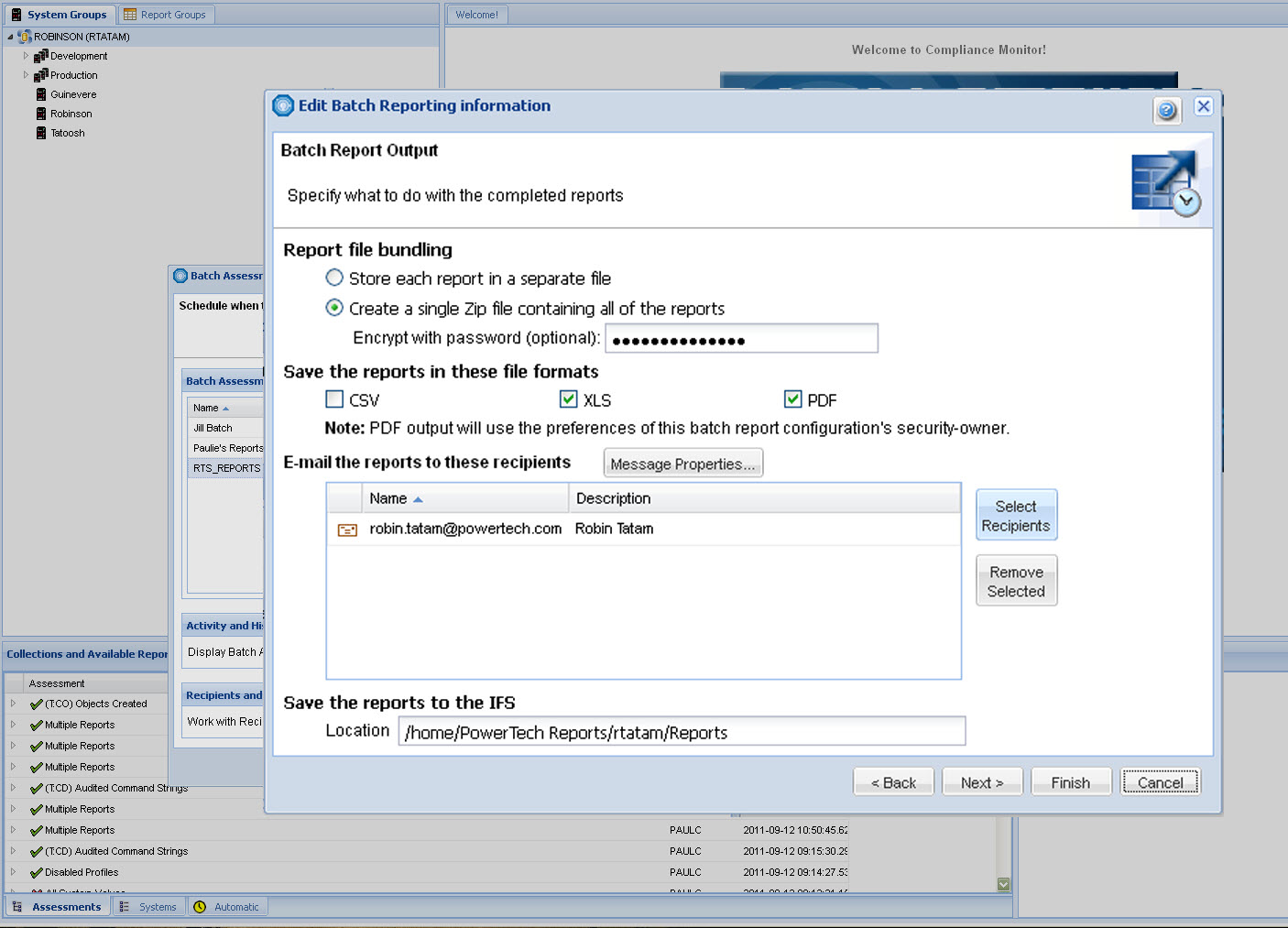PowerTech Compliance Monitor 3 adds automated security and compliance reporting.
Remember the humorous MasterCard commercials from a few years ago? In my mind, I see one of them going like this:
State-of-the-art, 64-bit, multi-core Power7 hardware: $225,000
Highly securable IBM i operating system: $100,000
Discovering you can generate and distribute audit reports automatically: PRICELESS
This joke probably isn't too funny to anyone who's responsible for generating audit reports from IBM i. Despite the server's incredible security infrastructure, auditing remains primarily a manual and thankless chore. And let's face it; any task that's thankless and manual probably won't get done. Even with a commercial audit tool, a user must decide what reports to run and then compile and interpret the results.
A Basic Audit Scenario
One of the most common report requests from auditors is for the powerful users on the system. Your first question is likely to be "What classifies a powerful user?" Unfortunately, there's no official auditor's dictionary (wouldn't that be nice!). And each auditor has different criteria that they're looking for.
Maybe you're can omit IBM-supplied profiles, disabled profiles that haven't signed on for at least 45 days, and any profiles without a password. They'll ask for each of those reports separately. Then, don't forget to include the users from all 15 production IBM i partitions, preferably on a single report so it's easier to process.
Here's one way to accomplish this task:
Step 1: Run IBM's user profile report (PRTUSRPRF) to dump the configuration data for all defined users. Print a hard copy of the report, or figure out how to use iSeries Navigator to download it to your PC.
Step 2: Manually review each user profile to see if it meets the auditor's criteria—and hope you don't have too many profiles to deal with! Don't forget special authorities of the 16 possible group profiles the user might belong to in case any authority is inherited. Oh, and the report doesn't include the number of days since prior sign-on, so you'll have to determine what the date was 45 days ago and check that manually. You'll also have to manually exclude the "known" users from the report each time.
Step 3: Document the name of the users that remain.
Step 4: Return to Step 1 and repeat for the next server.
Step 5: Aggregate the results into a single report (somehow) and distribute it to the auditor (somehow) in a secure manner.
Next, prepare to prove to the auditor that the information hasn't been tampered with (since you're likely to be one of those powerful users.) Also, expect to be asked for a lot more than one simple report.
This is a fictitious scenario, but it's not unrealistic. It doesn't take very long to realize that the process is tedious, time-consuming, and expensive—not to mention that it's error-prone and it's arguably considered self-policing.
A Basic Audit Scenario (Revised)
Compliance Monitor 3 from PowerTech has been redesigned and repackaged, and it comes equipped with even more reports. Powerful (and modifiable) filters can be applied instantly to the data, making child's play out of creating custom audit reports. And a brand new assessment scheduling and distribution function allows you to run reports at predefined intervals across multiple systems and distribute them on completion.
Let's take another look at that scenario, now using Compliance Monitor 3:
Step 1: Point and click to select any or all of the systems to be assessed.
Step 2: Point and click to select any or all of the hundreds of available reports to include.
Step 3: Specify the run schedule (optional) and distribution requirements.
Step 4: Sit back and relax.
You can send the reports automatically via email as individual files or bundled into a password-protected (and encrypted) zip file. Report files can be generated as editable or as PDFs that are digitally signed to assure auditors that the information hasn't been tampered with. If you prefer, the reports can be placed in the IFS for the user to access (see Figure 1).
Figure 1: Compliance Monitor includes batch scheduling and email distribution of audit reports. (Click image to enlarge.)
Compliance Monitor 3 provides the mechanism to eliminate the burden of audit reporting. Hundreds of report options give visibility to static information, such as user profiles and system values, as well as dynamic events recorded into the security audit journal, QAUDJRN. Click here to learn more about Compliance Monitor.
as/400, os/400, iseries, system i, i5/os, ibm i, power systems, 6.1, 7.1, V7, V6R1













 Business users want new applications now. Market and regulatory pressures require faster application updates and delivery into production. Your IBM i developers may be approaching retirement, and you see no sure way to fill their positions with experienced developers. In addition, you may be caught between maintaining your existing applications and the uncertainty of moving to something new.
Business users want new applications now. Market and regulatory pressures require faster application updates and delivery into production. Your IBM i developers may be approaching retirement, and you see no sure way to fill their positions with experienced developers. In addition, you may be caught between maintaining your existing applications and the uncertainty of moving to something new. IT managers hoping to find new IBM i talent are discovering that the pool of experienced RPG programmers and operators or administrators with intimate knowledge of the operating system and the applications that run on it is small. This begs the question: How will you manage the platform that supports such a big part of your business? This guide offers strategies and software suggestions to help you plan IT staffing and resources and smooth the transition after your AS/400 talent retires. Read on to learn:
IT managers hoping to find new IBM i talent are discovering that the pool of experienced RPG programmers and operators or administrators with intimate knowledge of the operating system and the applications that run on it is small. This begs the question: How will you manage the platform that supports such a big part of your business? This guide offers strategies and software suggestions to help you plan IT staffing and resources and smooth the transition after your AS/400 talent retires. Read on to learn:
LATEST COMMENTS
MC Press Online